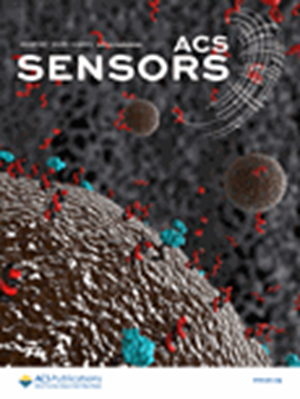Activation of Hidden Catalytic Sites in 2D Basal Plane via p–n Heterojunction Interface Engineering Toward Efficient Oxygen Evolution Reaction
IF 8.2
1区 化学
Q1 CHEMISTRY, ANALYTICAL
引用次数: 0
Abstract
Nonprecious metal‐based 2D materials have shown promising electrocatalytic activity toward the oxygen evolution reaction (OER). However, the catalytically active sites of 2D materials are mainly presented at the edge, and most of their basal planes are still catalytically inactive, which turns into a significant drawback on the catalytic efficiency. Here, a novel p–n heterojunction strategy is suggested that generates active sites on the basal plane of 2D NiFe‐layered double hydroxide (NiFe‐LDH). The n‐type NiFe‐LDH is first grown on a nickel foam (NF) substrate, and p‐type Co通过 p-n 异质结界面工程激活二维基底面中的隐藏催化位点,实现高效氧进化反应
非贵金属基二维材料在氧进化反应(OER)中表现出了良好的电催化活性。然而,二维材料的催化活性位点主要分布在边缘,其大部分基底平面仍然没有催化活性,这成为影响催化效率的一个重大缺陷。本文提出了一种新型 p-n 异质结策略,在二维镍铁层双氢氧化物(NiFe-LDH)的基底面上产生活性位点。首先在泡沫镍(NF)衬底上生长出 n 型 NiFe-LDH,然后通过简单的浸涂方法沉积出 p 型 Co3O4 纳米立方体,从而制造出 Co3O4/NiFe-LDH@NF p-n 异质结电极。结果,在 p 型 Co3O4 和 n 型 NiFe-LDH 的界面上诱导了电子转移,从而促进了 NiFe-LDH 惰性基底面上的惰性 Ni2+ 态氧化为催化活性更强的 Ni3+ 态。As 制备的 Co3O4/NiFe-LDH@NF 电极获得了更高的 OER 性能,在 1.48 V 时的电流密度高达 100 mA cm-2(相对于 RHE),优于原始 NiFe-LDH@NF 电极。p-n 结概念的利用将为改变催化不活跃基底面的电子结构和激发其电催化活性提供一种新策略。
本文章由计算机程序翻译,如有差异,请以英文原文为准。
求助全文
约1分钟内获得全文
求助全文
来源期刊

ACS Sensors
Chemical Engineering-Bioengineering
CiteScore
14.50
自引率
3.40%
发文量
372
期刊介绍:
ACS Sensors is a peer-reviewed research journal that focuses on the dissemination of new and original knowledge in the field of sensor science, particularly those that selectively sense chemical or biological species or processes. The journal covers a broad range of topics, including but not limited to biosensors, chemical sensors, gas sensors, intracellular sensors, single molecule sensors, cell chips, and microfluidic devices. It aims to publish articles that address conceptual advances in sensing technology applicable to various types of analytes or application papers that report on the use of existing sensing concepts in new ways or for new analytes.
 求助内容:
求助内容: 应助结果提醒方式:
应助结果提醒方式:


